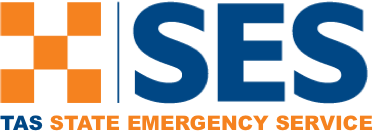The design and use of warnings should be guided by a total warning system, underpinned by clear governance arrangements, operate within an integrated incident management system, and be supported by delivery systems.
Warning Principles
Ten principles guide the development and use of warnings in Australia. They outline why warnings are important and how warnings are provided most effectively.

Australia’s Warning Principles are clearly articulated in the TEMA and are summarised below, click to reveal:
Warnings can save lives and protect people from harm.
The provision of warnings enacts a national commitment to building shared responsibility for disaster resilience, by empowering people to make decisions about their own safety.
- For greatest effect, warnings must come from a trusted source and be verifiable through multiple channels
- Warnings should therefore be easily and widely shared to recognise the diversity of potential trusted sources.
Scaled warning frameworks should guide the delivery of all warnings and support the consistent risk assessment of a hazard, its impact and its consequence.
- Warnings should be timely, targeted to communities at risk and tailored to provide detail and relevance
- Specific consideration should be given to harder to reach and vulnerable members of the community.
Warnings should describe the expected impacts and consequences of an approaching or current hazard, to assist people to understand and be motivated to take protective action.
Warnings should include practical calls-to-action using language tailored to the level of risk, ranging from advice and persuasive recommendations to authoritative direction.
- Warnings should be easy to understand and use a consistent structure to provide information
- Both written and visual information should be considered to assist with clearly conveying risk and encouraging protective action.
Warnings should be disseminated via multiple channels, tailored to suit each channel, and consider accessibility for diverse audiences.
- Warnings are one component within a systems-based approach to community safety
- Community engagement, education and awareness programs better prepare communities to receive, understand and act upon warnings.
Why we warn
Warnings save lives and minimises harm by facilitating protective action
People’s lives can be placed at risk during an emergency if they do not have the necessary information to take protective action, or lack specific guidance on what to do.
Warnings play a critical role in saving and protecting life and property. They serve and support broader risk management actions ranging from hazard reduction and traditional response, to ongoing community education and resilience building.
Warnings empower people and foster shared responsibility
Having access to clear public information and warnings about imminent or current emergencies means communities can better understand their risk, consider their personal situation and take protective action. This can also assist people to consider the needs of others, building a shared responsibility for disaster resilience and safety.

A mandate and responsibility to warn
Authorities have moral and various legal obligations to protect life and property from the impacts of hazards and emergencies, including through the provision of knowledge and information.
Many organisations also have specific legislative responsibilities and duties to provide warnings.
Public Value
Effective warnings make a clear contribution to mitigating and minimising the lasting consequences disasters can have on households, businesses and communities.
Community expectation
Community expectations of government agencies and emergency services continue to grow in an era of rapidly evolving information sharing technologies.
Experience from previous disasters highlight challenging expectations that timely, targeted and tailored warnings will always be provided. Communities expect important information will be shared promptly and effectively.

An Example:
Sarah Wilcox gives us insights into the role of a Communications Liaison/expert in the video below during an emergency event through her recent experiences with the Tasmanian bushfires.

